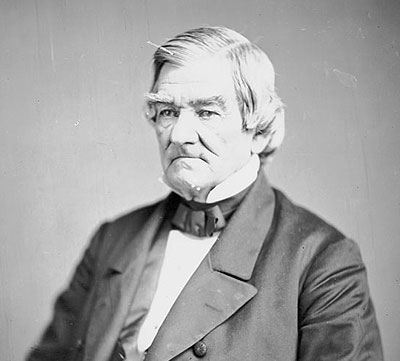 During the 1820s, John Ross was involved in organizing the Cherokee tribe into the Cherokee Nation, with its own Constitution. In 1828 the Cherokee elected it’s first Principal Chief. John Ross was elected and held the position until his death 1866.
During the 1820s, John Ross was involved in organizing the Cherokee tribe into the Cherokee Nation, with its own Constitution. In 1828 the Cherokee elected it’s first Principal Chief. John Ross was elected and held the position until his death 1866.
John Ross, who was one-eighth Cherokee, helped lead the Cherokee people through one of the most difficult periods in Cherokee history. Two years after his election the 1830 Indian Removal Act was passed by Congress. Ross was a strong opponent of Indian removal and lead the fight against it. John filed suit and won a Supreme Court ruling against white encroachment onto Cherokee lands but President Andrew Jackson refused to honor the Supreme Court decision.
In 1835 a small group of less than 500 Cherokee signed a treaty which in effect sold the Cherokee lands to the United States. The group did not represent the majority of the Cherokee people. Ross worked to fight the effects of this treaty. He gathered 16,000 signatures of Cherokees opposed to the treaty, but President Andrew Jackson pushed the treaty through Congress.
In 1838 the Trail Where They Cried (Trail of Tears) began. An estimated 2,000 Cherokees died along the way from Georgia to Indian Territory (in present day Oklahoma). John Ross worked hard to try and improve the conditions and survivability of the trail and is credited with saving many lives for doing so. Sadly, Ross’ own wife, Quatie, died during the journey.
Once in Indian Territory the Cherokee people worked to reorganize their government. Tahlequah was chosen as the new capital of the Cherokee Nation. A new constitution was passed in 1839 and John Ross was reelected Chief. On the same day that John Ross was reelected, Major Ridge and other leaders of the Treaty party (who had signed away the Cherokee land to the East) were killed for violating the law forbidding unauthorized sale of property.
John Ross and the Cherokee Indians faced many challenges together and overcame them all. John Ross was Chief during both the Trail of Tears and the Civil War and the Cherokee Nation survived both. It is largely due to John Ross’ dogged determination that the Cherokee were able to get back on their feet after the Trail of Tears and rebuild their community and government.